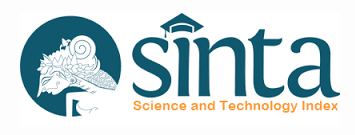MEMBACA “TINUNG” DALAM FILM CA BAU KAN: ANALISIS WACANA KRITIS DALAM PERSPEKTIF GENDER
Abstract
This paper attempted to describe the representation of women in Ca Bau Kan throughcritical discourse analysis coined by Sara Mills in analyzing films using gender
perspective. Theory of construction of reality by Berger and Luckmann was used to view
how women are depicted in the film. Through gender perspective in media, this article
reveals how film media constructs reality on women, who are associated with passiveness,
obedience and dependence to men. It also discusses how the difference between
masculinity and femininity is preserved by media culture. Lastly, this paper ends with a
conclusion on the importance of equality between men and women so that film industry
can represent women in the media better, provide gender perspective for the society,
especially young Indonesian audience.
References
Basrowi, Sudikin. 2002. Metode Penelitian Kualitatif Perspektif Mikro, Surabaya: Insan Cendekian.
Bourdieu, Pierre.1984. Distinction: A Social Critique of the Judgment of Taste. Translated by Richard Nice.
Boston: Harvard University Press.
Eriyanto. 2012, Analisis Wacana: Pengantar Analisis Teks Media: LKiS.
Jorgensen Marianne dan Philips Louise, Analisis wacana Teori dan Metode,2010:Yogyakarta:Pustaka
Pelajar.
Gamman, Lorraine dan Marshment, Margaret.2010. Tatapan Perempuan: Perempuan sebagai
Penonton Budaya Popular. Yogyakarta: Jalasutra.
Marianne W. Jorgen dan Louise J Philips,2010,Analisis Wacana Teori dan Metode.Yogyakarta: Pustaka
Pelajar.
Michel Foucault, The History of Sexuality, 1: The Will to Knowledge (London: Penguin, 1998).
Patton, Cindy. 2007. Cinematic Identity: Anatomy of a Problem Film. New York: University of Minnesota
Press.
Peter L. Berger and Thomas Luckmann, The Social Construction of Reality A Tretise in the Sociology of
Knowledge, (New York: 1966).
Sara Mills, Gender and Colonial Space (Manchester: Manchester University Press, 2005);
Sobur,Alex. 2012, Analisis Teks Media, Bandung:PT Remaja Rosdakarya.
Once an article was published in the journal, the author(s) are:
granted to the journal right licensed under Creative Commons License Attribution that allows others to share the work with an acknowledgment of the work's authorship. permitted to publish their work online in third parties as it can lead to wider dissemination of the work. continue to be the copyright owner and allow the journal to publish the article with the CC BY license receiving a DOI (Digital Object Identifier) of the work.





